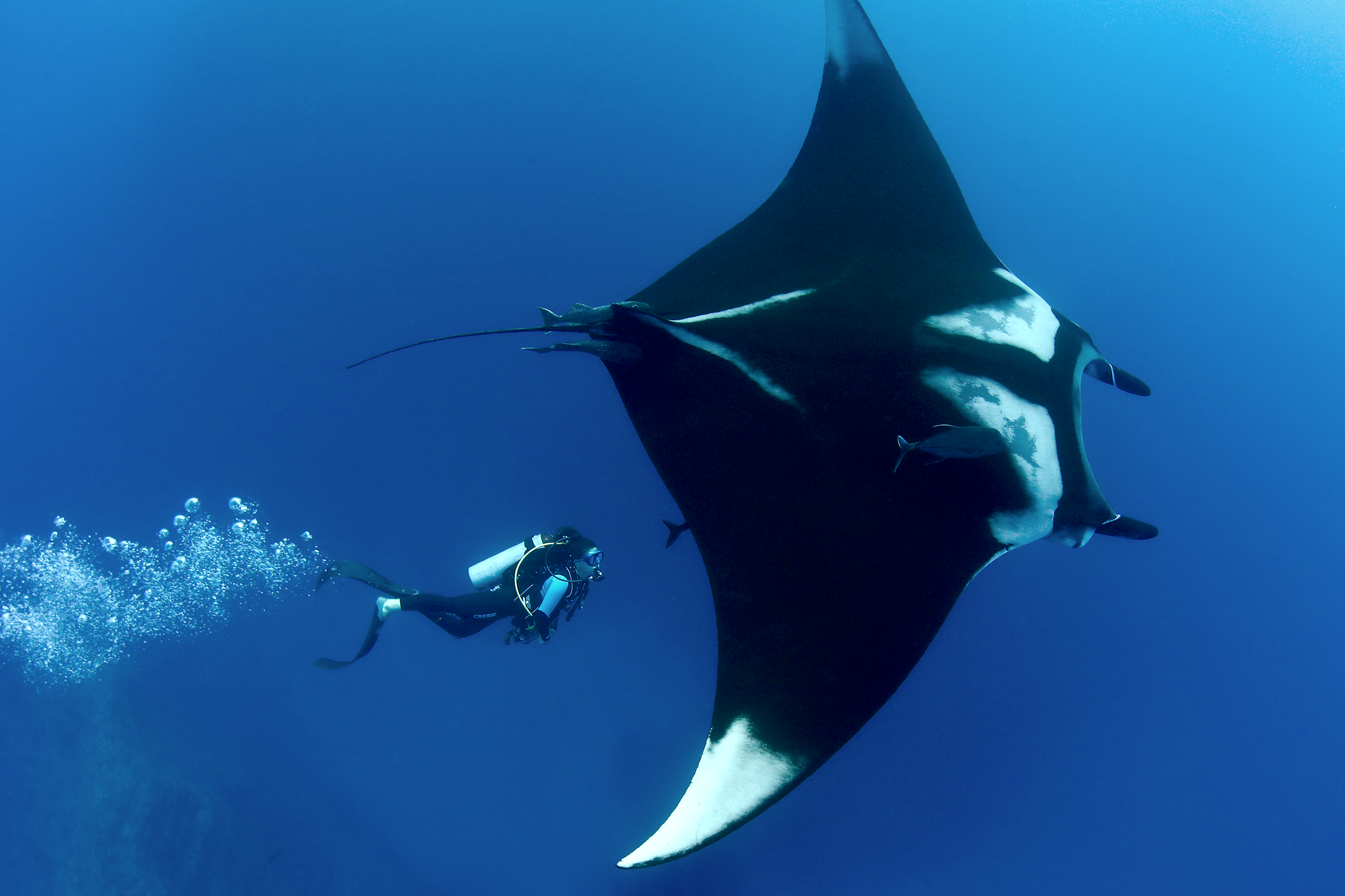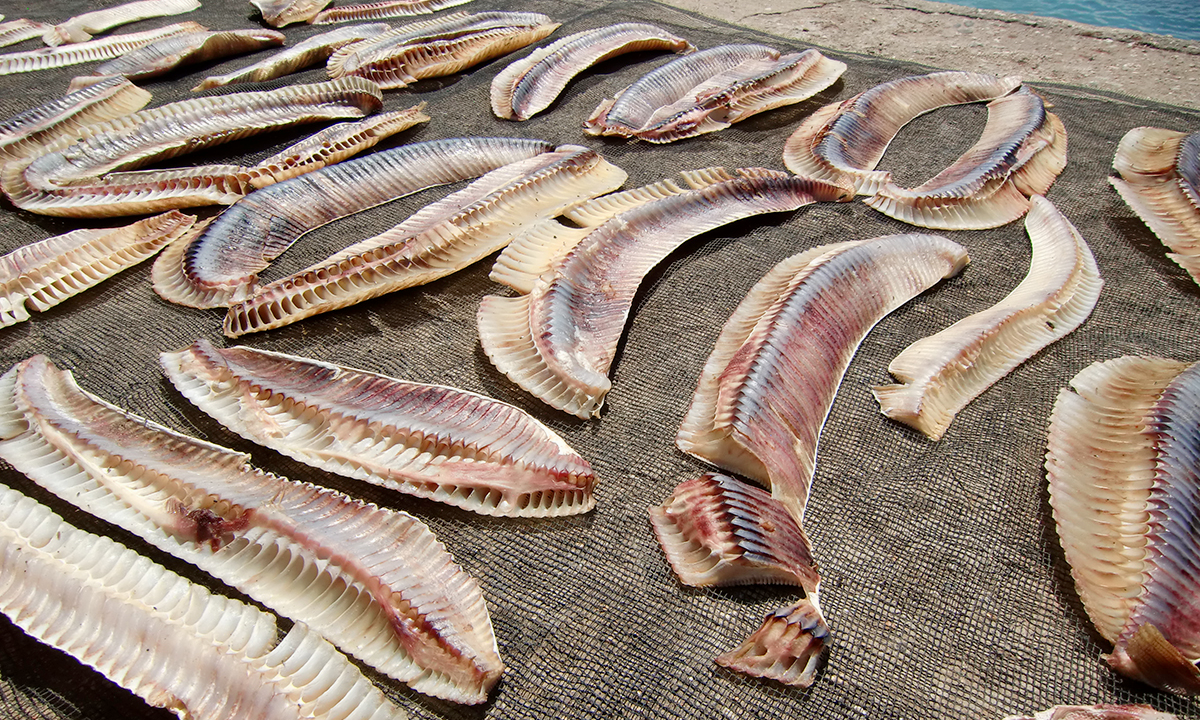Giant manta becomes the first manta ray to be listed as an endangered species
The conservation status of the giant (or oceanic) manta ray (Mobula birostris) has been uplisted today to Endangered on the International Union for the Conservation of Nature (IUCN) Red List of Threatened Species.
Help us to save Mantas from extinction
An endangered listing is reserved for species with grave conservation concerns. Today’s announcement serves to confirm what we have long suspected – this gentle marine giant is finding it hard to cope with intensifying anthropogenic pressures around the globe. The giant manta ray now joins over 16,000 endangered species to be assessed with this serious threat level. At this stage, 30% of sharks and rays are now threatened with extinction.
At this stage, 30% of sharks and rays are now threatened with extinction.
The announcement marks the end of a devastating two decades for this species. Targeted for their gill plates – which they use to filter feed on small zooplankton from the water column – the unrelenting and increasing demand for their body parts has fueled both existing and emerging target fisheries. The relatively new Asian-based trade seems to be impacting the giant manta more than other species of manta ray, with the unsustainable harvesting decimating their populations across the globe.
Giant mantas in a marketplace in Indonesia; Photo by Dr. Andrea Marshall
Dr. Andrea Marshall, co-founder of the Marine Megafauna Foundation (MMF), who lead-authored this newest assessment for the IUCN, has been involved in their assessments since 2003.
“The giant manta ray is a classic example of a species that is quickly succumbing to human-induced pressures. When we first assessed manta rays in 2003 there simply was not enough information on the species to determine their conservation status and they were listed as ‘Data Deficient’, but on each of the subsequent assessments, their conservation status increased steadily from Near Threatened, to Vulnerable and now to Endangered. Their current status is a direct result of unsustainable pressure from fishing, which now threatens to destabilize their populations across the globe.”
Giant manta ray. Photo by Dr. Andrea Marshall
To curb the burgeoning trade in their body parts to Asia and to encourage more comprehensive conservation strategies for their populations around the world, the giant manta ray was listed on two of the most important global conservation treaties, the Convention on Migratory Species (CMS) in 2011 and the Convention on the International Trade in Endangered Species (CITES) in 2013.
Manta rays cannot reproduce fast enough to build back their numbers once they are depleted.
Sadly, their numbers have continued to decline. “Manta rays simply cannot withstand such pressures on their populations,” Dr. Marshall explains. “They have an extremely conservative reproductive strategy. They reach sexual maturity relatively late in life, they give birth to a single offspring every few years in the wild, they do not look after or defend their young and the offspring themselves are vulnerable when they are small and may not survive. In other words, as a species, they simply cannot reproduce fast enough to build back their numbers once they are depleted.”
Giant manta gill plates in a market in Indonesia; Photo by Dr. Andrea Marshall
This iconic species is not only extremely important from an ecological perspective, giant mantas also provide vast economic benefits to tourism industries around the world. Senior Scientist and manta ray expert at MMF, Dr. Stephanie Venables, explains:
“Interactions with manta rays are highly sought after by dive and snorkel tourists globally and contribute millions of dollars to tourism economies each year, particularly in developing nations. At this pivotal time, recognizing their economic value may help to encourage the protection of this enigmatic and now endangered species”
The giant manta ray was only formally described (the process of gathering enough scientific evidence to provide a taxonomic description of a newly discovered species) by Dr. Marshall and colleagues in 2009. At the time it was one of the largest species to be described in our oceans and the announcement was met with excitement around the globe.
The discovery was covered by the BBC that year in the first-ever documentary on manta rays.
“It is such an honor to have been able to study and describe this species. The realization that the giant manta ray is now in danger of extinction is a hard pill to swallow”, Dr. Marshall admits. “We are still busy learning about this extraordinary creature and we have only scratched the surface. There is so much more we need to understand, but at this stage, we have put that all aside in favor of protecting the last remaining populations of giant mantas across the globe.”
– ENDS –
You can help save manta rays from extinction:
Adopt a Manta Ray • Make a Donation • Sign up to our FREE Magazine, Ocean Giants • Join Andrea on an expedition
Note to Editors
Established in 1964, the IUCN Red List is the world’s most comprehensive and authoritative source on the extinction risk status of plants and animals. It is widely used and respected as a critical indicator of the health of the world’s biodiversity and a tool used to inform and catalyze action needed for policy change and conservation. The giant manta assessment was lead-authored by Dr. Andrea Marshall, co-founder and principal scientist of the Marine Megafauna Foundation. Working with a team from the IUCN’s Species Survival Commission’s Shark Specialist Group (SSG) which is made up of almost 200 experts from over 50 countries, she updated all of the Red List Assessments for manta and devil rays over the last 12 months. The new Red List Assessment for giant manta rays is available at www.iucnredlist.org and is part of the SSG’s Global Shark Trends Project which is assessing the extinction risk for all sharks, rays, and chimaeras.
For questions about this research, please contact:
Dr. Andrea Marshall, Co-founder & Principal Scientist, Marine Megafauna Foundation
Email: andrea@marinemegafauna.org
Tel: +258 84 730 1190.
The Marine Megafauna Foundation was created in 2009 to research, protect and conserve the populations of threatened marine megafauna around the world. ‘Megafauna’ are large marine species such as sharks, rays, and sea turtles. For further details, please see www.marinemegafauna.org or follow us on Twitter, Facebook, Instagram, and LinkedIn.
Learn more about Andrea’s work with manta rays in Mozambique













